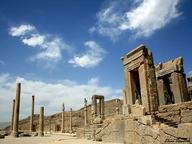Quiz Answer Key and Fun Facts
1. To which ruler did the kings of Persia in the sixth through fourth centuries BCE trace their descent?
2. Cyrus (II) the Great was noted for his relative toleration of ethnic and religious differences in his empire. Which text refers to his Edict of Restoration?
3. During his relatively brief reign, which area would Cambyses II (530-522 BCE) bring under Persian control?
4. During the reign of Darius I (522-486 BCE), Persian forces moved onto the Balkan Peninsula. Which battle, in 490 BCE, ended the first Persian attempt to conquer Greece?
5. As part of the second Persian invasion of Greece, Xerxes (486-465 BCE) had a bridge built across the Hellespont or Dardanelles to assist troop movements. When a storm destroyed the first bridge, how was Xerxes said to have the Hellespont punished?
6. In an irony of history, Artaxerxes (reigned 465-424 BCE) granted asylum to a man who was an enemy of his father and grandfather. Who was this Athenian?
7. Historical sources describe Darius II (reigned 423-404 BE) as depending on his wife Parysatis. What relationship existed between Darius and Parysatis?
8. Artaxerxes II (404-358 BCE) had to deal with a civil war involving his brother Cyrus the Younger. Which Greek historian's account references this Civil War?
9. Which city did Artaxerxes III (reigned 358-338 BCE) famously destroy after it tried to declare independence from the Persian Empire?
10. Which famed military leader of the ancient world effectively ended the Persian Empire by defeating Darius III in a series of battles and looting the city of Persepolis in 330 BCE?
Source: Author
bernie73
This quiz was reviewed by FunTrivia editor
gtho4 before going online.
Any errors found in FunTrivia content are routinely corrected through our feedback system.

